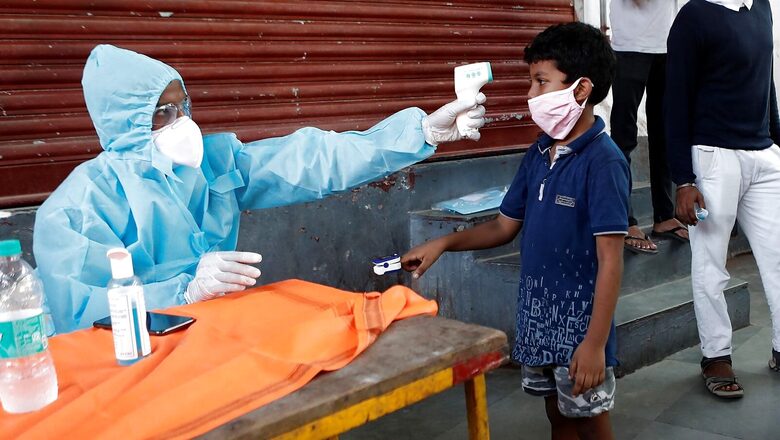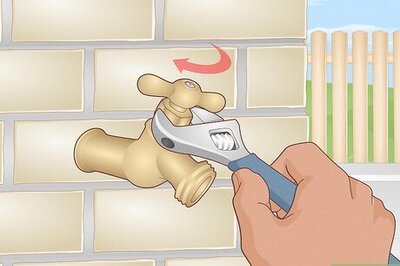
views
Indian drug regulator DCGI on Friday approved Zydus Cadila’s three-dose COVID-19 DNA vaccine for emergency use in adults and children aged 12 years and above. This becomes India’s first vaccine for children. It is being perceived a timely move amid warnings of an upcoming third wave in the country, which some experts have warned could be deadlier towards children.
While the Union Health Ministry has refuted that the next wave of the pandemic would prove more serious to the ‘vulnerable and unvaccinated’ population comprising children, it has, at the same time, augmented paediatric services across the nation as a preventive measure.
During a second wave of infections that peaked in April and May, hundreds of thousands of people died for want of oxygen and medical facilities, and now there are concerns that another third wave will gather during the winter months.
As schools in at least 11 of India’s 28 states open after more than a year of closures, worries mount that these could become breeding grounds for transmission of the virus.
States Augment Paediatric Services for Third Wave:
Several states are building facilities with more paediatric beds, plus oxygen, due to concern that children returning to school without being vaccinated will be among the most vulnerable during a third wave of coronavirus infections. Health administrators have taken heed of trends in the United States, where a record number of children have been hospitalised as the coronavirus Delta variant, first found in India, has surged through unvaccinated populations.
“We don’t know how the virus will behave, but we cannot afford to be unprepared this time around,” Suhas Prabhu, who heads the Paediatric Task Force in the big western state of Maharashtra, said.
The Maharashtra government has stockpiled medicines, and built facilities for additional pediatric beds and oxygen provisions in new centres in Mumbai and Aurangabad. Built on empty stretches of land or in re-purposed stadiums, the Mumbai facilities have a total of 1,500 pediatric beds, most of them with oxygen.
In neighbouring Gujarat, authorities have set up 15,000 pediatric oxygen beds, health commissioner Jai Prakash Shivahare said.
Why are Children More Vulnerable?
Several experts have warned that the third wave will likely affect children. Virologist Dr V Ravi told the Hindustan Times that it was common sense that the virus will attack people who are not immune. “You can get immunity from this virus either through infection or through vaccination. If not, the virus will definitely catch you. Adults, more people are getting infected — most in the first wave and second wave. Adults have vaccine so they are getting vaccinated. Children in the first wave we had only 4 per cent (infection) across the country, in the second wave 10-15 per cent.”
Ravi explained that it left about 60% of children vulnerable because there are no vaccines for children yet in India.
Dr Bakul J Parekh and Dr Samir H Dalwai wrote in an opinion piece in News18 that the government must consider vaccinating children as during March-April 2021 the number of children affected by Covid-19 significantly went up.
“Additionally, the number of children with Covid-19 needing hospitalisation and intensive care has significantly gone up. This has brought children (or an additional 40% of the population) directly into the segment of patients suffering from Covid-19 infection who would need significant medical care. This undoubtedly paves the way for an immediate vaccination programme for children and adolescents in India,” they wrote.
Government Allays Concerns:
As of March 2021, less than 1 percent of India’s coronavirus deaths were in the under 15 age group, according to the health ministry, and officials say the severity of the disease in this age group has been minimal so far. Further, epidemiologists say there is no evidence to show that the Delta variant or any other mutations affect children more than other parts of the population.
The Centre has reiterated time and again that children are often asymptomatic and health infrastructure are being made for their treatment.
Previously, Dr VK Paul, Member (Health), NITI Aayog at the Union Health Ministry’s media briefing on COVID-19 on June 1 had informed that adequate arrangements are being made in terms of healthcare infrastructure in order to provide effective care and treatment to children who may get infected. He had further said that COVID-19 in children is often asymptomatic and seldom requires hospitalization. “However, it is possible that a small percentage of children who get infected may need hospitalization,” the statement said.
Dr Randeep Guleria, Director, All India Institute of Medical Sciences (AIIMS) New Delhi had said that healthy children recovered with mild illness without need for hospitalization while the ones admitted in the hospital due to Covid-19 infection during the second wave in India either had co-morbidities or low immunity.
Results of Covaxin Trial in Children Awaited:
Highlighting that vaccination forms an integral component of the government’s five-point strategy to fight the pandemic (including Test, Track, Treat and COVID Appropriate Behaviour), the statement further quoted Dr NK Arora, Chairperson of the COVID-19 Working Group of the National Technical Advisory Group on Immunization (NTAGI) who had said the Covaxin trials have been started on children aged between 2 – 18 years and the results for the same will be received by September to October this year.
AztraZeneca is also carrying out trials for its vaccine in the 6-17 age group, but so far there is no data on it yet.
Measures to Prevent Covid-19 in Children:
The Union Ministry of Health and Family Welfare issued guidelines for ‘Management of COVID-19 in children (below 18 years).
– The guidelines stress on children washing their hands often and wearing masks while outside their houses. For children aged 5-18 mask is mandatory, while for 2-5 years of age children, mask is desirable, under the parent’s supervision.
– Non-medical or fabric three-layered cotton masks are preferable for children.
– Children should stay at home in possible limits, avoid travel.
– Covid suspect children should not be in contact with their grandparents as elderly are at very high risk of the serious disease.
– Parents have also been advised to monitor the child for five warning signs — fever lasting beyond four-five days, decreased oral intake, child becoming lethargic, increasing respiratory rate and oxygen saturation dropping below 95 per cent.
– Children should be given lukewarm water to drink, ensure hygiene through proper brushing at morning and at night for children above two years of age, and oil pulling and gargles with warm water for children above 5 years of age.
– Children should also get adequate sleep and an easily digestible, fresh and warm and balanced diet.
– The guidelines also recommend Anti-microbial fumigation every evening at the children’s play area, cot, beddings, cloths and toys.
(With inputs from Reuters)
Read all the Latest News, Breaking News and Assembly Elections Live Updates here.
















Comments
0 comment